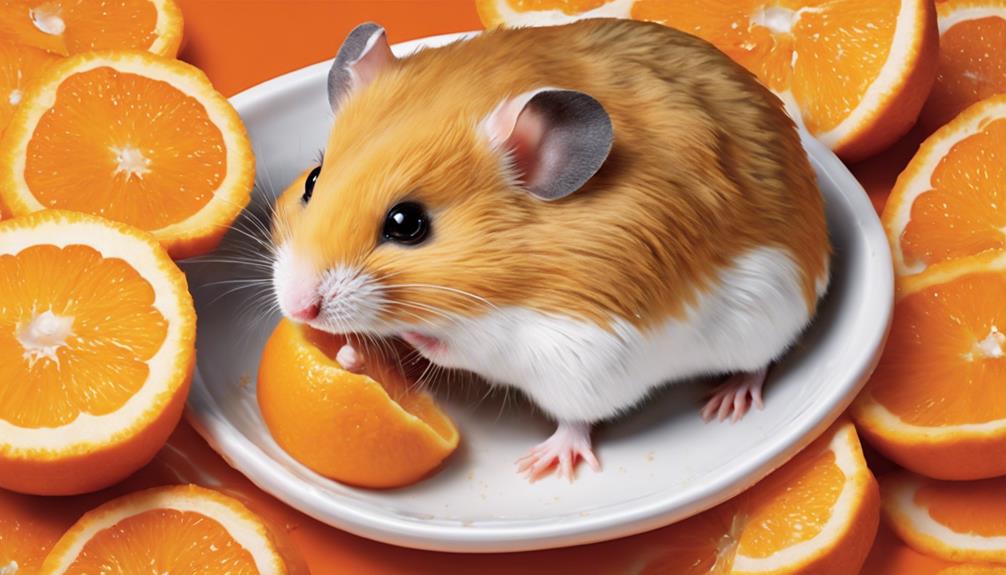To keep your hamster healthy, watch for signs like changes in activity, grooming, or breathing. Common issues include respiratory problems, dental issues, and obesity, which can often be prevented with a balanced diet, regular cage cleaning, and plenty of exercise. Enrich their environment to reduce stress and catch health concerns early. Staying vigilant guarantees your hamster stays happy and healthy—if you keep looking closer, you’ll uncover even more ways to support their well-being.
Key Takeaways
- Regularly monitor for changes in eating, activity, grooming, or breathing to detect early health issues.
- Maintain a clean habitat with frequent spot cleaning and weekly thorough cleaning to prevent infections.
- Provide a balanced diet with variety and avoid overfeeding to prevent obesity and related health problems.
- Ensure proper cage ventilation and air quality to reduce respiratory risks and promote overall health.
- Schedule routine veterinary checkups and respond promptly to any signs of illness for early intervention.

Hamster Health
Hamster Health
Have you ever wondered how to keep your hamster healthy and happy? Ensuring your small pet’s well-being involves more than just providing food and shelter. You need to pay close attention to their dietary needs and maintain a clean environment. Incorporating dietary enrichment into their daily routine not only keeps mealtime interesting but also promotes proper digestion and prevents boredom. Offering a variety of fresh vegetables, occasional treats, and safe chew toys can stimulate their natural foraging instincts and reduce stress. Be cautious not to overfeed high-fat or sugary snacks, as these can lead to obesity and other health issues. Alongside dietary enrichment, maintaining good cage hygiene is vital. Regularly cleaning your hamster’s enclosure prevents the buildup of waste, bacteria, and mold, which can cause respiratory problems, skin infections, or gastrointestinal illnesses. Spot cleaning daily to remove uneaten food and soiled bedding, and do a thorough clean at least once a week. Use mild, hamster-safe cleaning products and avoid harsh chemicals that could harm your pet. When cleaning, take care to rinse and dry everything thoroughly before returning your hamster to its clean habitat. Proper cage hygiene also involves providing fresh bedding regularly, as soiled bedding is a breeding ground for bacteria and parasites. Changing bedding at least once a week helps keep the environment sanitary and comfortable for your hamster. In addition to dietary enrichment and cage hygiene, observe your hamster closely for signs of health problems. Changes in eating habits, lethargy, abnormal grooming, or respiratory issues should prompt a visit to a veterinarian experienced with small animals. Preventing common health problems starts with proactive care—monitor their weight, ensure they have ample physical activity, and provide mental stimulation through toys and safe tunnels. Regular health checkups and understanding common health problems can help catch issues early and improve treatment outcomes. Staying informed about emerging health risks in small pets can aid in early detection and prevention strategies. Additionally, being aware of seasonal adjustments and how they affect your hamster’s environment can further support their health and well-being. Incorporating air quality considerations, such as proper ventilation and clean air, can also play a crucial role in preventing respiratory issues in small pets. Maintaining optimal air purifier maintenance and ensuring the environment remains free of dust and pollutants is essential for their respiratory health. Understanding your hamster’s specific needs and responding promptly to any health concerns can extend their lifespan and improve their treatment outcomes. Remember, a well-balanced diet, regular cage cleaning, and attentive care form the foundation of your hamster’s health. By creating a stimulating environment with proper dietary enrichment and maintaining a hygienic cage, you considerably reduce the risk of illness and help your hamster thrive. Paying attention to these details may seem simple, but they make a world of difference in your pet’s happiness and longevity. Ultimately, your dedication to their health and well-being will reward you with a lively, curious, and content hamster that enjoys a vibrant life.
Frequently Asked Questions
How Often Should I Take My Hamster to the Vet?
You should take your hamster to the vet at least once a year for a check-up, especially if you notice any signs of illness. Regular vet visits help monitor their health and catch issues early. While you’re grooming your hamster and ensuring they get enough exercise, keep an eye out for changes in behavior or appearance. Consistent care keeps your hamster healthy and happy, preventing more serious health problems down the line.
What Are Signs of Dental Problems in Hamsters?
Dental problems in hamsters are often subtle yet serious. You might notice dental pain when your hamster struggles to eat or shows drooling and weight loss. Overgrown teeth can cause difficulty biting, pawing at the mouth, or misalignment. Watch for signs like drooping cheeks or a decreased appetite. If you see these, it’s vital to seek vet care promptly so your hamster gets the treatment needed to prevent discomfort and health issues.
Can Hamsters Recover From Respiratory Infections?
If your hamster has a respiratory infection, recovery is possible with proper respiratory infection treatment. You’ll want to see a vet promptly to diagnose and start antibiotics if needed. Keep your hamster in a warm, stress-free environment to ease breathing issues. While some hamsters recover fully, others may have lingering problems. Monitoring their breathing and providing supportive care helps improve their chances of recovering completely.
Which Foods Are Toxic to Hamsters?
Think of your hamster’s diet as a delicate dance—every step matters. You should avoid toxic foods like chocolate, onions, garlic, and citrus, as they can harm your tiny friend. These toxic foods disrupt their health and are a dangerous trap in their diet. Stick to safe, nutritious foods like fruits, veggies, and commercial hamster pellets, and you’ll keep your furry companion happy and healthy.
How Do I Prevent Cage Mites in My Hamster?
To prevent cage mites in your hamster, focus on good cage hygiene and mite prevention. Regularly clean and disinfect your hamster’s cage, removing soiled bedding and debris. Keep the environment dry and well-ventilated, and replace bedding frequently. Check your hamster for signs of mites, such as itching or hair loss. By maintaining a clean cage and monitoring your pet, you can effectively prevent mite infestations.
Conclusion
So, you thought keeping a tiny hamster was easy? Turns out, they can get sick just like the big pets—who would’ve guessed? By paying attention to their health and offering proper care, you might avoid those unexpected vet visits. Ironically, the smallest creatures often need the most attention. So, enjoy your little furry friend, but don’t forget: their health is in your hands—no pressure, right?










